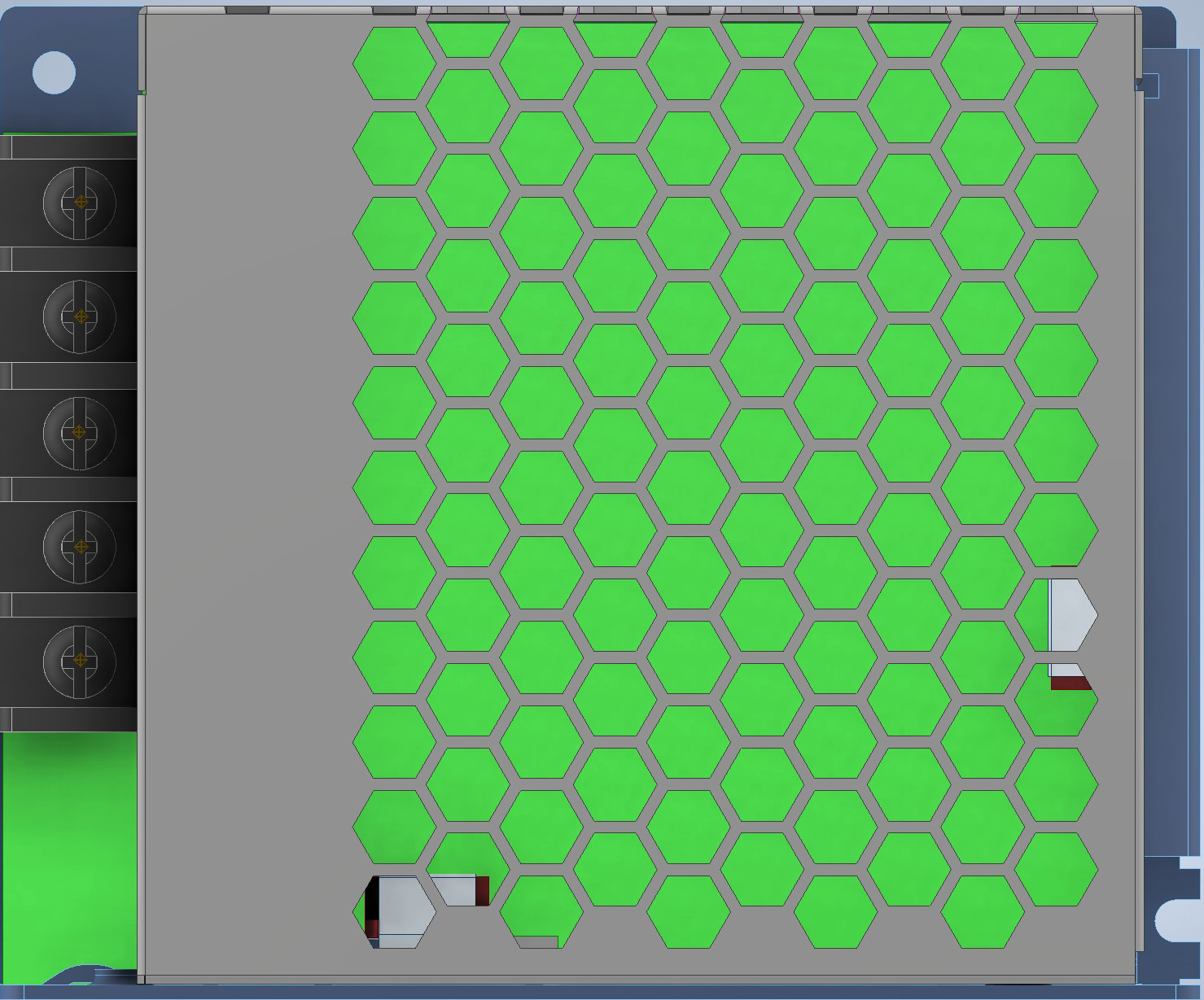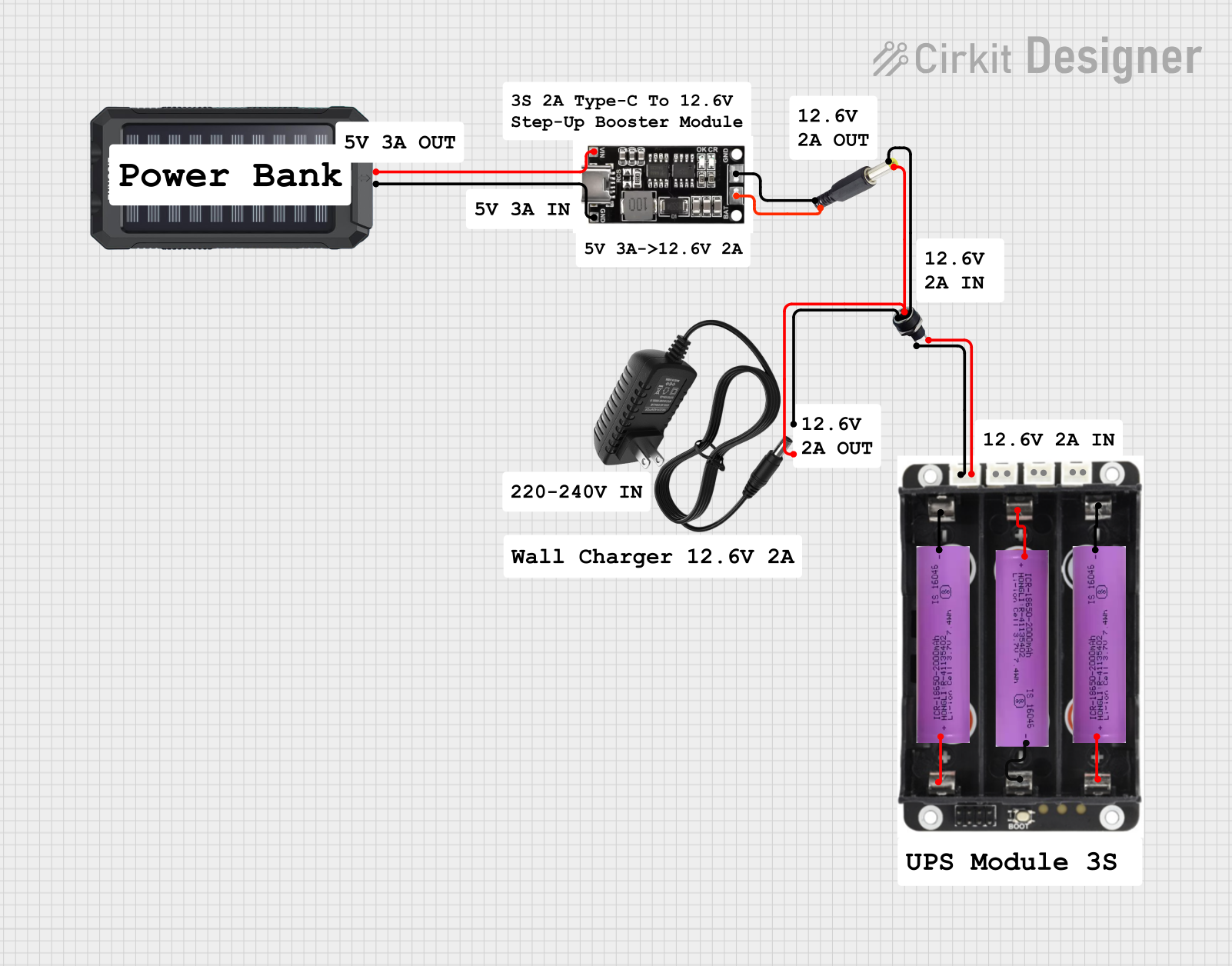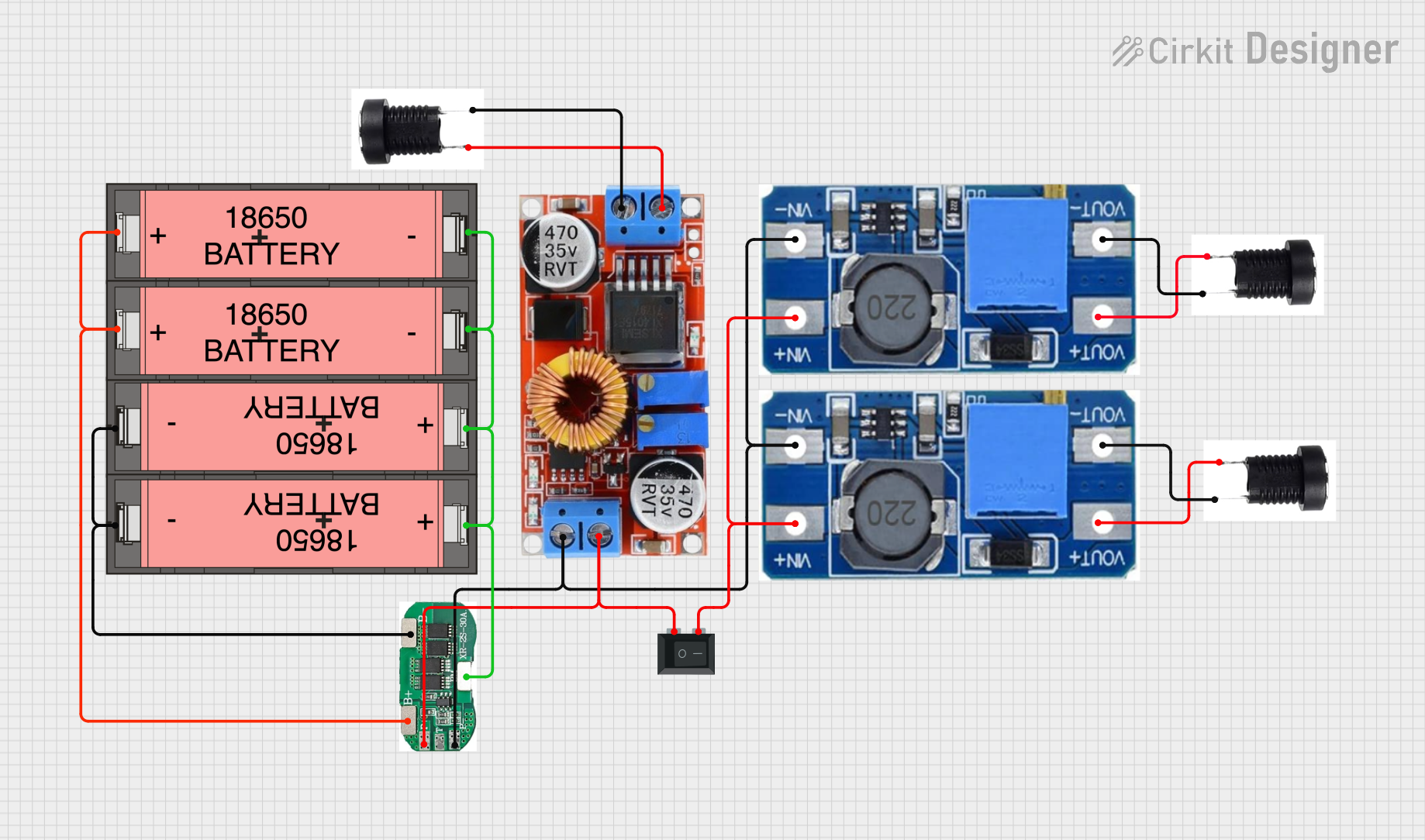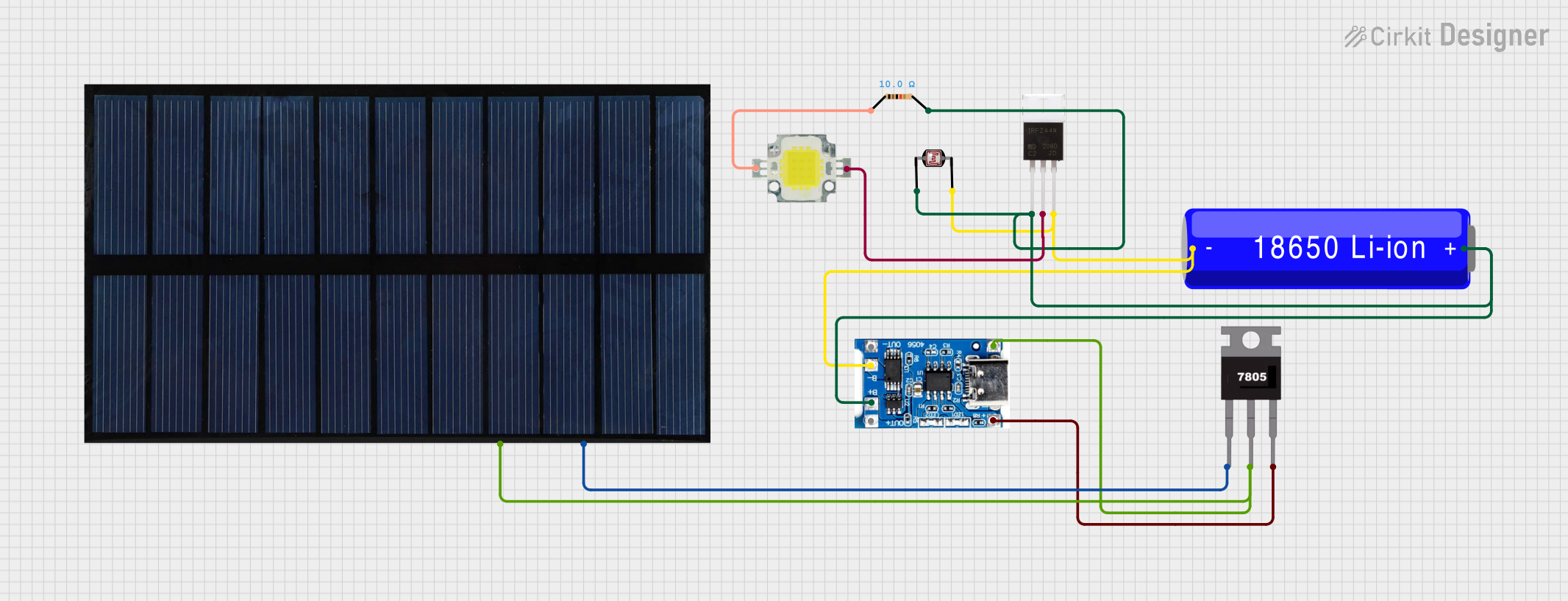
How to Use MW LRS-50-3.3V: Examples, Pinouts, and Specs

 Design with MW LRS-50-3.3V in Cirkit Designer
Design with MW LRS-50-3.3V in Cirkit DesignerIntroduction
The MW LRS-50-3.3V is a compact, low-cost switching power supply designed to convert AC voltage into a stable 3.3V DC output. This highly efficient power supply is ideal for powering low-voltage electronic devices and embedded systems. Its small form factor and reliable performance make it a popular choice for industrial automation, IoT devices, LED lighting, and other applications requiring a steady 3.3V DC power source.
Explore Projects Built with MW LRS-50-3.3V

 Open Project in Cirkit Designer
Open Project in Cirkit Designer
 Open Project in Cirkit Designer
Open Project in Cirkit Designer
 Open Project in Cirkit Designer
Open Project in Cirkit Designer
 Open Project in Cirkit Designer
Open Project in Cirkit DesignerExplore Projects Built with MW LRS-50-3.3V

 Open Project in Cirkit Designer
Open Project in Cirkit Designer
 Open Project in Cirkit Designer
Open Project in Cirkit Designer
 Open Project in Cirkit Designer
Open Project in Cirkit Designer
 Open Project in Cirkit Designer
Open Project in Cirkit DesignerCommon Applications
- Powering microcontrollers and single-board computers
- Industrial control systems
- LED lighting and displays
- IoT devices and sensors
- Low-voltage DC motors and actuators
Technical Specifications
The MW LRS-50-3.3V is designed to deliver consistent performance under a wide range of operating conditions. Below are its key technical specifications:
| Parameter | Value |
|---|---|
| Input Voltage Range | 85-264V AC / 120-370V DC |
| Output Voltage | 3.3V DC |
| Output Current | 10A |
| Output Power | 33W |
| Efficiency | 78% |
| Ripple and Noise | ≤80mVp-p |
| Operating Temperature | -30°C to +70°C |
| Dimensions (L x W x H) | 99 x 82 x 30 mm |
| Weight | 0.3 kg |
| Safety Standards | UL62368-1, EN62368-1, IEC62368-1 |
Pin Configuration and Descriptions
The MW LRS-50-3.3V features screw terminal connections for input and output. Below is the pin configuration:
| Pin Label | Description |
|---|---|
| L | AC Line Input (Live) |
| N | AC Neutral Input |
| FG | Frame Ground (Earth) |
| V+ | DC Output Positive (+3.3V) |
| V- | DC Output Negative (Ground) |
| V ADJ | Output Voltage Adjustment (±10% of 3.3V) |
Usage Instructions
How to Use the MW LRS-50-3.3V in a Circuit
- Input Connection: Connect the AC input terminals (L and N) to the mains power supply. Ensure the input voltage is within the specified range (85-264V AC).
- Output Connection: Connect the V+ and V- terminals to the load requiring a 3.3V DC power supply. Ensure the load does not exceed the maximum output current of 10A.
- Grounding: Connect the FG terminal to the earth ground for safety and to reduce electrical noise.
- Voltage Adjustment: If necessary, use the V ADJ potentiometer to fine-tune the output voltage within ±10% of 3.3V.
Important Considerations and Best Practices
- Heat Dissipation: Ensure adequate ventilation around the power supply to prevent overheating. Avoid enclosing the unit in a sealed box without proper airflow.
- Overload Protection: The MW LRS-50-3.3V includes overload and short-circuit protection. However, avoid operating the power supply near its maximum rated current for extended periods to ensure longevity.
- Safety Precautions: Always disconnect the power supply from the mains before making any connections or adjustments. Handle the unit with care to avoid electric shock.
- Mounting: Use the mounting holes provided on the chassis for secure installation. Avoid placing the unit near sources of excessive vibration or moisture.
Example: Powering an Arduino UNO
The MW LRS-50-3.3V can be used to power an Arduino UNO by stepping down the voltage to 3.3V. Below is an example of how to connect the power supply to the Arduino:
- Connect the V+ terminal of the power supply to the 3.3V pin on the Arduino UNO.
- Connect the V- terminal of the power supply to the GND pin on the Arduino UNO.
- Ensure the power supply is properly grounded using the FG terminal.
Here is a simple Arduino sketch to blink an LED while powered by the MW LRS-50-3.3V:
// This sketch blinks an LED connected to pin 13 of the Arduino UNO.
// Ensure the Arduino is powered by the MW LRS-50-3.3V power supply.
void setup() {
pinMode(13, OUTPUT); // Set pin 13 as an output pin
}
void loop() {
digitalWrite(13, HIGH); // Turn the LED on
delay(1000); // Wait for 1 second
digitalWrite(13, LOW); // Turn the LED off
delay(1000); // Wait for 1 second
}
Troubleshooting and FAQs
Common Issues and Solutions
No Output Voltage
- Cause: Incorrect input connections or no AC input.
- Solution: Verify that the AC input is connected to the L and N terminals and that the mains power is on.
Output Voltage Too Low or Too High
- Cause: Misadjusted V ADJ potentiometer.
- Solution: Use a small screwdriver to adjust the V ADJ potentiometer until the output voltage is 3.3V.
Overheating
- Cause: Insufficient ventilation or excessive load.
- Solution: Ensure proper airflow around the power supply and reduce the load if it exceeds 10A.
Noise or Ripple on Output
- Cause: Poor grounding or interference from nearby devices.
- Solution: Ensure the FG terminal is properly connected to earth ground and minimize interference from other devices.
FAQs
Q: Can the MW LRS-50-3.3V be used outdoors?
A: No, the power supply is not weatherproof. It should be used in a dry, indoor environment.
Q: Can I use this power supply to charge batteries?
A: The MW LRS-50-3.3V is not designed for battery charging. Use a dedicated battery charger for this purpose.
Q: What happens if the load exceeds 10A?
A: The power supply includes overload protection and will shut down temporarily to prevent damage. Reduce the load and restart the power supply.
Q: Is the output voltage adjustable?
A: Yes, the output voltage can be adjusted within ±10% of 3.3V using the V ADJ potentiometer.